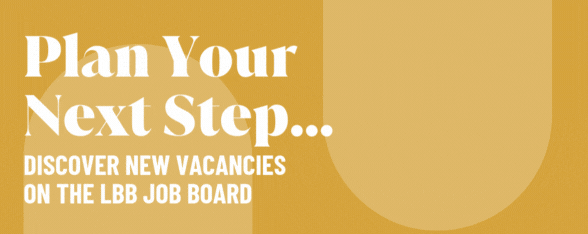
"Comfortable Ideas Get in the Way": The Radical Simplicity and Subjectivity of Yoshihiro Yagi’s Design

As Dentsu Inc. Tokyo’s creative director and Asia’s most awarded art-based creative, Yoshihiro Yagi knows a thing or two about art. The Japanese native has always been a huge fan of graphics and drawing and, after a brief stint as a rhythmic gymnast, he attended Kyoto University of Art and Design studying Information Design – where he is now a teacher in his spare time. Throughout two decades spent in the industry he’s worked on campaigns for Easy Japan Railway, Honda, Panasonic and many more. He has produced designs that provide new values while being true to the authenticity of the subject.
With a belief that ‘design is a bigger concept than advertising’ and a strong portfolio in print design, LBB’s Natasha Patel picks Yagi’s brain on whether design really is subjective and why he believes simplicity is key.
LBB> We spoke to you back in 2012 where you mentioned you've 'always pursued simplicity', is that still the case now?
Yoshihiro> Yes. As an art director, I’ve always liked simplicity in graphics and the look of a design, but I now think that the thinking should be kept simple, too. I try to see whether the brief, or the concept, or the brand strategy is not complicated for the business.
In order to deliver brand value to the user in an impactful way, we need to stand between the brand and the user, with a neutral mind. However, sometimes things like deadlines, or familiar and comfortable ideas get in the way, and we have to fight for a good solution. It is quite a challenge to make the brand’s true value visible in its purest form and connect it with the needs of the user. This is why simplicity is a very effective indicator for the process.
LBB> I read that you said 'design is a bigger concept than advertising'… tell me more about this belief.
Yoshihiro> As agencies, we help clients improve their business of course, but the world is getting complex more than ever, and sometimes the client brief cannot cover everything. The crucial part of design is finding the right problem and the solution. To build a strong brand strategy, you need to work with your client and sometimes redefine the problem, then work towards a solution.
Today, you can collect all sorts of data without a lot of trouble, but if you rely on data too much and try to build the logic, you will end up with the same solution as your competitor. I think that you can become more competitive if you base your design on subjectivity and intuition. It’s easy to see the fancy visual designs, but I think that the verb ‘to design’ is more important than the noun ‘design’.
LBB> You recently picked up a few awards for Pocky THE GIFT, how did you go about redesigning something for such a well-known brand?
Yoshihiro> Pocky is a long-selling chocolate snack and is a national favourite. We thought through what the true assets of the product are and looked closely at the needs of the target. We focused on how young people’s behaviour on social media is based on self-appreciation, and how they catch up with their friends’ news and send small gifts to each other. We redesigned the product as a communication tool rather than a snack, and restructured the brand as one that supports the lifestyle of the young people. As a result, we managed to transform the retail and distribution strategy, and gained a new market, a new community that Pocky had never been able to approach before.

LBB> As a member of the Japan Graphic Designers Association what makes this side of art so unique to the country?
Yoshihiro> For about 10 years since I joined the agency, I worked mainly on graphic design such as posters and catalogues. I have a strong graphic design base and it has helped me a lot in my current work.
A visually strong piece of work can achieve understanding with speed, and without the need of words. Japanese designers are known to be good at craftwork and high-context communication, and these skills could be used effectively to strengthen the brand. Japan may differ in the way that the term ‘design’ historically became known and used, because it is understood more as a noun, and in a graphical sense. But actually, a lot of the technical skills needed in our communications industry is based on graphic design.
LBB> I see you've done a lot of poster and catalogue redesign for brands, when you’re given a brief what do you do to your ideas come to life?
Yoshihiro> I like to subjectively imagine a larger brand world in the beginning, based on my various findings. Of course, it’s just an imaginary world but then I try to make it real, figuring out the angles and layout, and trim out a piece of graphic in my mind. People think I come up with an idea within the framework of a poster, but I’m actually cutting a small piece out from a bigger world. If it’s a catalogue or something with several pages, I put it together in my mind like a movie and edit the pages so that it tells a story. By putting the brand world forward, the design can be more dynamic.

LBB> Tell me if I'm wrong but if design is a subjective thing, how do you ensure you create something that appeals to the masses?
Yoshihiro> Our approach to design is often subjective, but it is not a showcase of egos. We are not creating work for an art exhibition, but we are thinking about the essence of the brand. We research the brand, its competitors, the market, and the users. In my case I’ve done this for twenty years, standing in between the brand and the consumers, trying to translate the uniqueness of the brand for the consumers in a relevant way. I think that if you are trained and experienced at a certain level, you should believe your intuition and keep it going till the end, and this makes an impact on the quality of the design.
I think there will always be someone out there in the world that will relate to what you’re thinking.
LBB> What are your favourite design-led projects that you have worked on?
Yoshihiro> One of my favourite projects is called ‘Magic 1 Day Flat Pack’ for Menicon, a contact lens maker. It’s also sold in other markets around the world, and I hope I can do more work like this. We collaborated with the client responsible for product development and manufacturing, and worked on the package design, communication, and collateral. We received a lot of great feedback, like how we drastically changed the image of the contact lens industry. But what was really great about this work was that we were inspired by the story of Menicon’s founder. Years ago, he would cut pieces of acrylic glass and put it in his own eyes to test it. He had a vision to not only help people recover their eyesight, but to bring quality of life to people. His story really inspired us, and it helped us to keep going whenever we would face any obstacles during the project. These kind of encounters with wonderful business people and brands remind you why you are doing this job.

LBB> Are there any projects you wish you had worked on?
Yoshihiro> If I choose from some of the recent work, I’d say the new brand identity design for Burger King. I love the bold but charming design that makes you want to have a burger, and of course the simplicity of it.
LBB> Where does your inspiration come from?
Yoshihiro> It’s not like I have a straight answer, but I find inspiration in my daily life. If I’m in a park with my kid and looking for bugs, I would think, ‘Why does this insect have such bright colours? Brands that communicate nature values tend to use soft, mild colours, but the real power of nature might be expressed in such bright colours’.
Or, if I’m doing the laundry and choose a detergent based on the scent, I would think, ‘Wouldn’t it be nice if you could choose a bottle of whiskey like this?’. When I first started doing laundry, I thought the process was interesting, and reflected it on my design process. I do try to stop sometimes… but still, I can’t help thinking about design.















